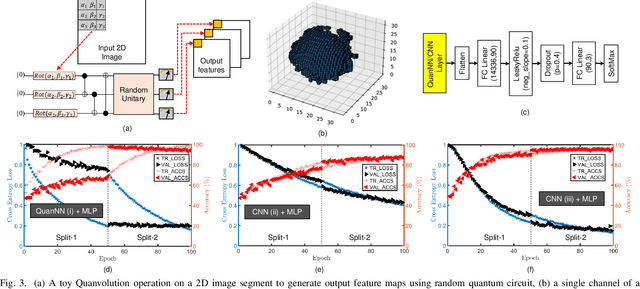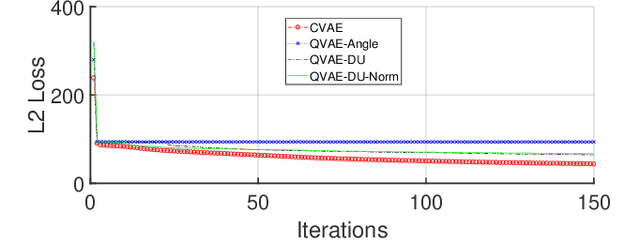Junde Li
Random Relabeling for Efficient Machine Unlearning
May 21, 2023Abstract:Learning algorithms and data are the driving forces for machine learning to bring about tremendous transformation of industrial intelligence. However, individuals' right to retract their personal data and relevant data privacy regulations pose great challenges to machine learning: how to design an efficient mechanism to support certified data removals. Removal of previously seen data known as machine unlearning is challenging as these data points were implicitly memorized in training process of learning algorithms. Retraining remaining data from scratch straightforwardly serves such deletion requests, however, this naive method is not often computationally feasible. We propose the unlearning scheme random relabeling, which is applicable to generic supervised learning algorithms, to efficiently deal with sequential data removal requests in the online setting. A less constraining removal certification method based on probability distribution similarity with naive unlearning is further developed for logit-based classifiers.
Energy-based Generative Models for Target-specific Drug Discovery
Dec 05, 2022Abstract:Drug targets are the main focus of drug discovery due to their key role in disease pathogenesis. Computational approaches are widely applied to drug development because of the increasing availability of biological molecular datasets. Popular generative approaches can create new drug molecules by learning the given molecule distributions. However, these approaches are mostly not for target-specific drug discovery. We developed an energy-based probabilistic model for computational target-specific drug discovery. Results show that our proposed TagMol can generate molecules with similar binding affinity scores as real molecules. GAT-based models showed faster and better learning relative to GCN baseline models.
Analysis of Power-Oriented Fault Injection Attacks on Spiking Neural Networks
Apr 10, 2022



Abstract:Spiking Neural Networks (SNN) are quickly gaining traction as a viable alternative to Deep Neural Networks (DNN). In comparison to DNNs, SNNs are more computationally powerful and provide superior energy efficiency. SNNs, while exciting at first appearance, contain security-sensitive assets (e.g., neuron threshold voltage) and vulnerabilities (e.g., sensitivity of classification accuracy to neuron threshold voltage change) that adversaries can exploit. We investigate global fault injection attacks by employing external power supplies and laser-induced local power glitches to corrupt crucial training parameters such as spike amplitude and neuron's membrane threshold potential on SNNs developed using common analog neurons. We also evaluate the impact of power-based attacks on individual SNN layers for 0% (i.e., no attack) to 100% (i.e., whole layer under attack). We investigate the impact of the attacks on digit classification tasks and find that in the worst-case scenario, classification accuracy is reduced by 85.65%. We also propose defenses e.g., a robust current driver design that is immune to power-oriented attacks, improved circuit sizing of neuron components to reduce/recover the adversarial accuracy degradation at the cost of negligible area and 25% power overhead. We also present a dummy neuron-based voltage fault injection detection system with 1% power and area overhead.
Drug Discovery Approaches using Quantum Machine Learning
Apr 01, 2021



Abstract:Traditional drug discovery pipeline takes several years and cost billions of dollars. Deep generative and predictive models are widely adopted to assist in drug development. Classical machines cannot efficiently produce atypical patterns of quantum computers which might improve the training quality of learning tasks. We propose a suite of quantum machine learning techniques e.g., generative adversarial network (GAN), convolutional neural network (CNN) and variational auto-encoder (VAE) to generate small drug molecules, classify binding pockets in proteins, and generate large drug molecules, respectively.
Quantum Generative Models for Small Molecule Drug Discovery
Jan 09, 2021



Abstract:Existing drug discovery pipelines take 5-10 years and cost billions of dollars. Computational approaches aim to sample from regions of the whole molecular and solid-state compounds called chemical space which could be on the order of 1060 . Deep generative models can model the underlying probability distribution of both the physical structures and property of drugs and relate them nonlinearly. By exploiting patterns in massive datasets, these models can distill salient features that characterize the molecules. Generative Adversarial Networks (GANs) discover drug candidates by generating molecular structures that obey chemical and physical properties and show affinity towards binding with the receptor for a target disease. However, classical GANs cannot explore certain regions of the chemical space and suffer from curse-of-dimensionality. A full quantum GAN may require more than 90 qubits even to generate QM9-like small molecules. We propose a qubit-efficient quantum GAN with a hybrid generator (QGAN-HG) to learn richer representation of molecules via searching exponentially large chemical space with few qubits more efficiently than classical GAN. The QGANHG model is composed of a hybrid quantum generator that supports various number of qubits and quantum circuit layers, and, a classical discriminator. QGAN-HG with only 14.93% retained parameters can learn molecular distribution as efficiently as classical counterpart. The QGAN-HG variation with patched circuits considerably accelerates our standard QGANHG training process and avoids potential gradient vanishing issue of deep neural networks. Code is available on GitHub https://github.com/jundeli/quantum-gan.
Quantum-soft QUBO Suppression for Accurate Object Detection
Jul 28, 2020



Abstract:Non-maximum suppression (NMS) has been adopted by default for removing redundant object detections for decades. It eliminates false positives by only keeping the image M with highest detection score and images whose overlap ratio with M is less than a predefined threshold. However, this greedy algorithm may not work well for object detection under occlusion scenario where true positives with lower detection scores are possibly suppressed. In this paper, we first map the task of removing redundant detections into Quadratic Unconstrained Binary Optimization (QUBO) framework that consists of detection score from each bounding box and overlap ratio between pair of bounding boxes. Next, we solve the QUBO problem using the proposed Quantum-soft QUBO Suppression (QSQS) algorithm for fast and accurate detection by exploiting quantum computing advantages. Experiments indicate that QSQS improves mean average precision from 74.20% to 75.11% for PASCAL VOC 2007. It consistently outperforms NMS and soft-NMS for Reasonable subset of benchmark pedestrian detection CityPersons.
 Add to Chrome
Add to Chrome Add to Firefox
Add to Firefox Add to Edge
Add to Edge